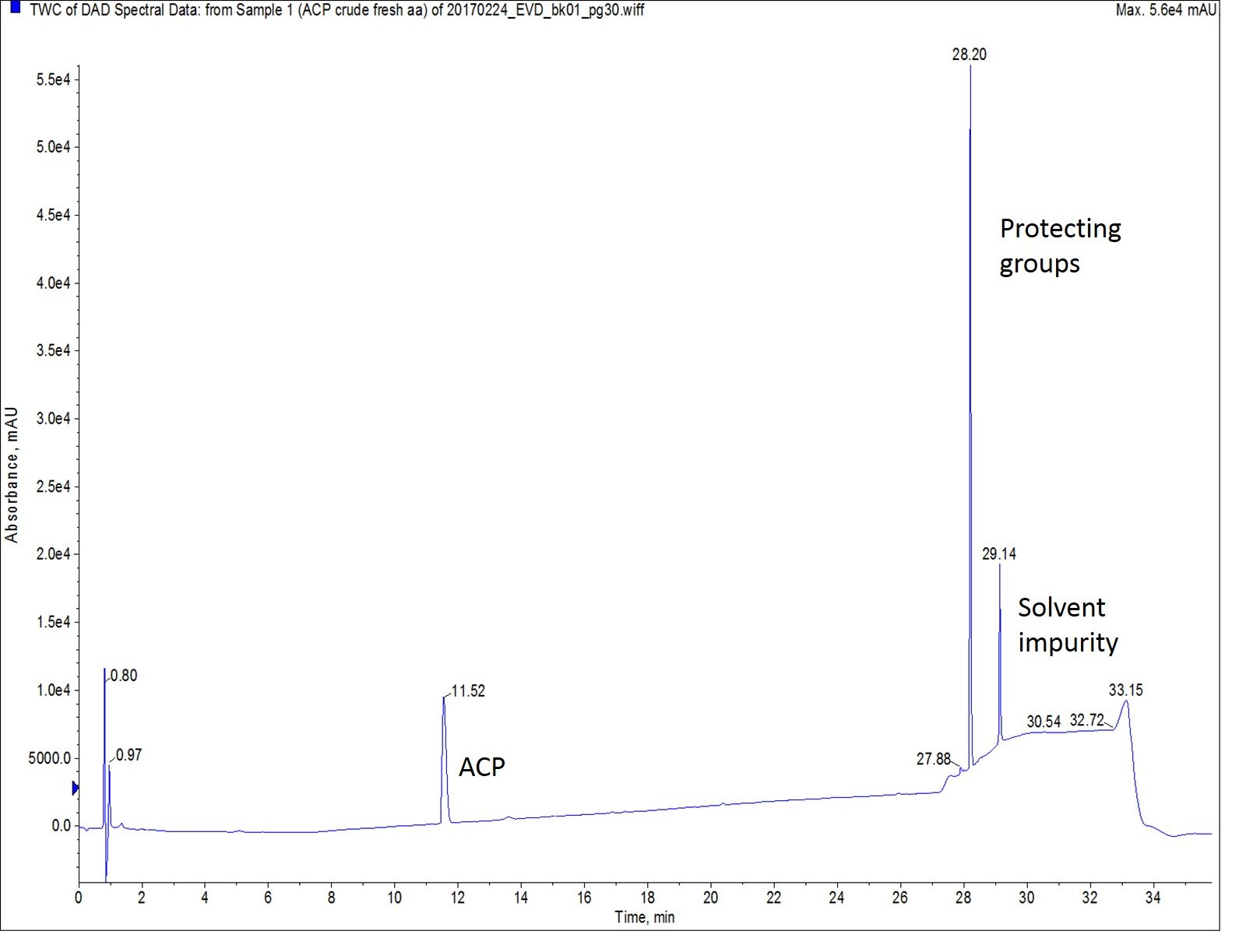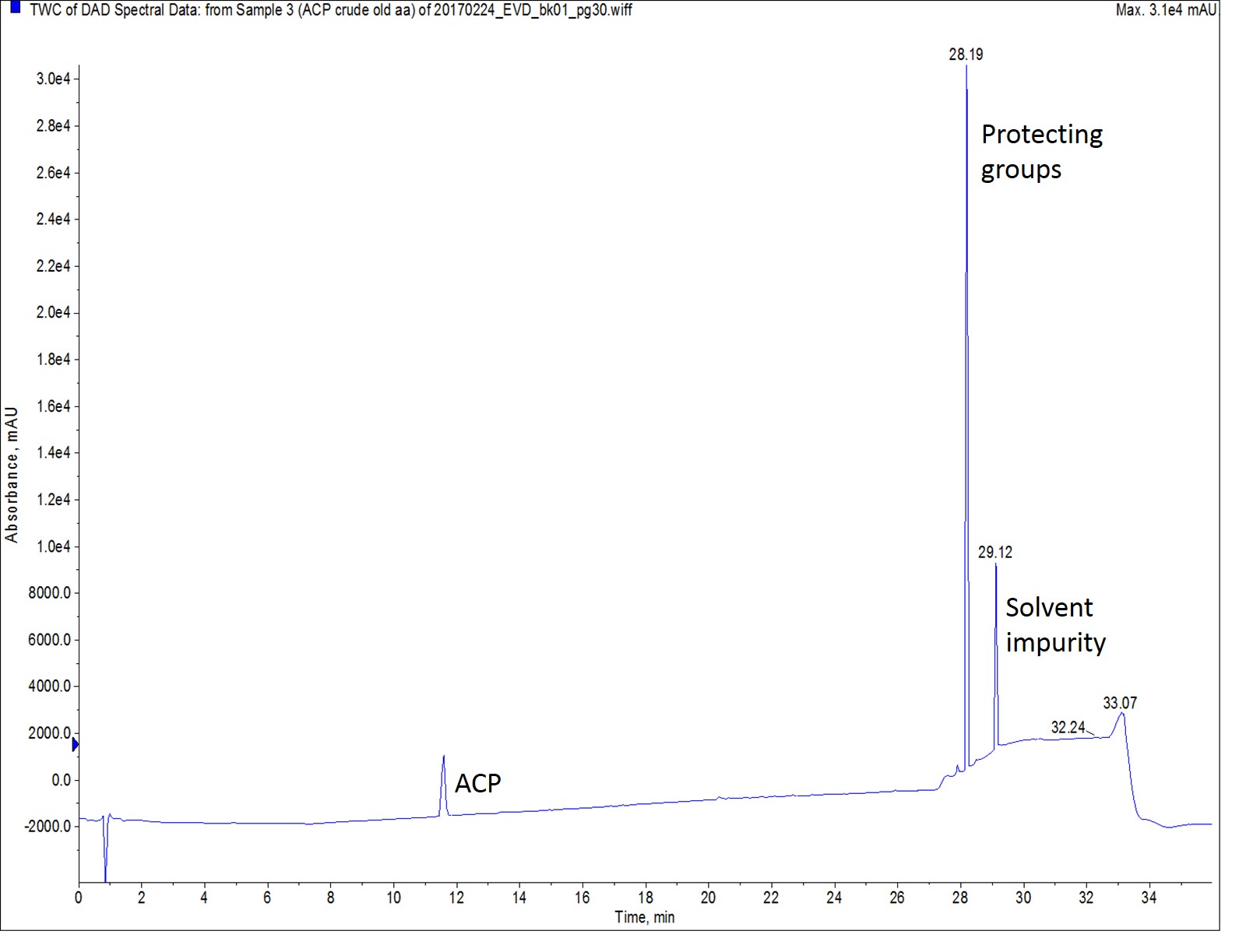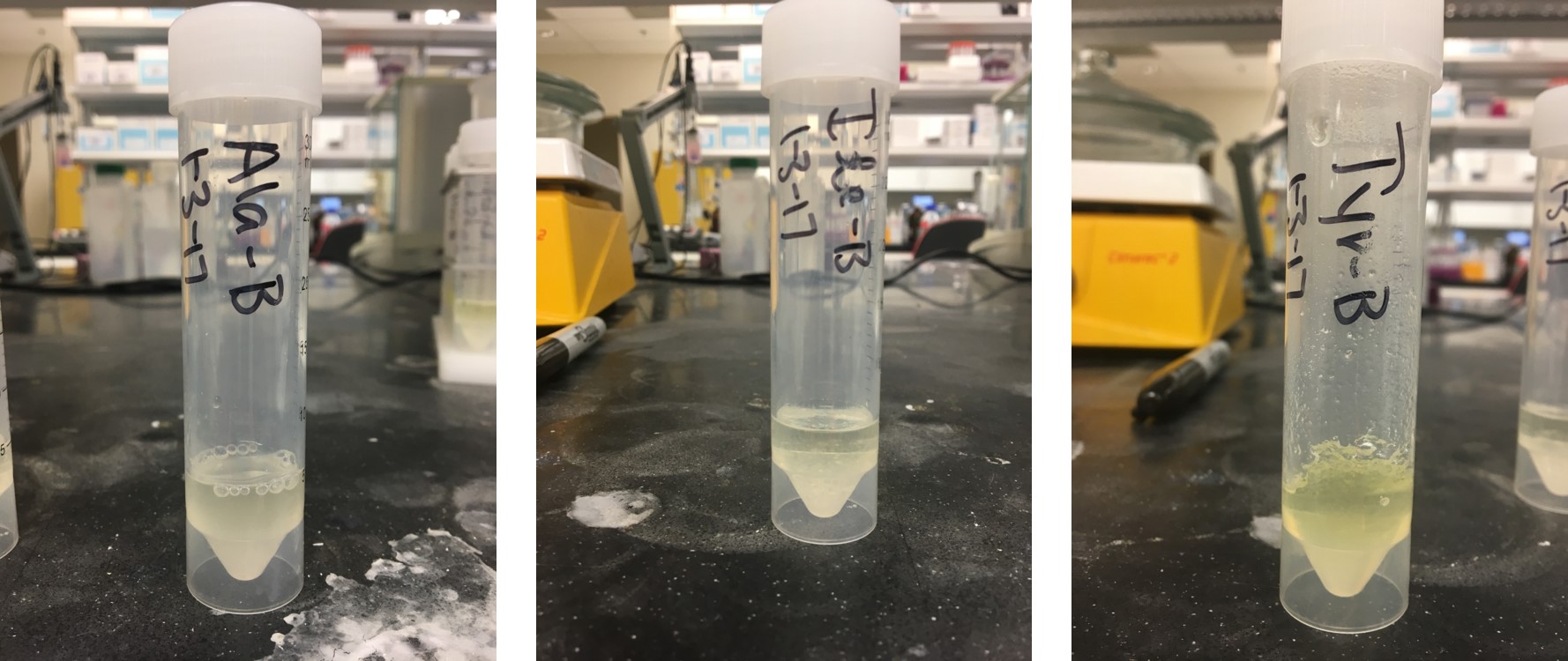In today’s post I’ll answer the above question by comparing the crude purity of peptides synthesized using amino acid stock solutions or freshly dissolved amino acids.
In previous posts I have described using high concentrations of amino acids to improve your peptide synthesis among some other tips and tricks. But there is a particularly handy tip that was left off the list.
Weighing out and dissolving the amino acids and coupling reagents requires the greatest amount of manual effort when setting up a peptide synthesis, particularly for automated instruments. One way to alleviate some of this time investment is to generate stock solutions of your amino acids for use over the course of several syntheses. You’re probably asking yourself though: “how long are those amino acid solutions actually stable?”
On January 3rd, I decided to start an experiment. I weighed out and dissolved amino acid solutions required to synthesize my favorite 10 amino acid peptide. One set of solutions I stored capped at 4 °C, while the other set I stored capped on the bench top. The solutions were prepared on the same day, using the same DMF and the same type of vials for storage. Then I waited. Almost two months went by before I set up a synthesis.
I decided to start the comparison with a peptide synthesized using freshly prepared amino acid and coupling reagent solutions. This would provide me a baseline for the expected purity for this particular peptide sequence. Using single couplings at 75°C for 5 minutes, DIC and Oxyma coupling reagents, and ChemMatrix® resin, I synthesized the ACP 65-74 sequence commonly evaluated, Figure 1. As expected, this synthesis was extremely pure off the synthesizer.

Figure 1: Crude analytical HPLC for ACP synthesized using freshly prepared amino acid solutions.
Upon initial inspection, the stored amino acid solutions were clear and transparent with no indications of adverse interactions with the plastic tube they were stored in. So I proceeded with the synthesis of ACP 65-74 using the exact same conditions and scale as the previous synthesis. In this case though, the I used the amino acid solutions that had been prepared 6 weeks prior and stored at 4 °C in solution, Figure 2. It is important to note here that the coupling reagents were prepared freshly for this synthesis. The peptide synthesized with the 4 °C amino acid stock solutions retained the high crude yield and purity as that conducted with the freshly prepared amino acid solutions.

Figure 2: Crude analytical HPLC for ACP synthesized using amino acid solutions prepared 6 weeks earlier and stored at 4ºC.
I had planned to also conduct a synthesis using the amino acid solutions stored at room temperature. But then I looked at the tubes… Figure 3.

Figure 3: Amino acid solutions stored in a closed plastic vessel for 6 weeks at room temperature. All solutions yellowed and show signs of detrimental interactions with the plastic. Alanine (left) was cloudy, while isoleucine (middle) contained large precipitants and tyrosine (right) actually gelled somewhat.
All the amino acids solutions had yellowed in color. Many contained precipitate or had even gone so far as to gel the liquid. It is also pretty clear that an interaction with the plastic had occurred, likely causing some of the observed effects. With the safety of my synthesizer in mind, I decided NOT to proceed any further with these solutions.
While it is satisfying to see that properly stored amino acid solutions can be used to synthesize peptides with high crude purity and yield, there are some extra considerations that I haven’t touched on yet. First and foremost, always prepare your coupling reagents fresh for each synthesis. However, there are certainly some amino acids that are more sensitive to their environment than others. Methionine, which readily oxidizes in solution, should not be prepared as a stock solution, but others, like cysteine and histidine, should be considered on a case-by-case basis. In my experience with amino acid stock solutions though, I consumed the amino acid before any degradation was observed.
At this point, I’m comfortable saying the answer that I posed at the beginning of this post is that amino acids are stable in solution, when stored at 4ºC, for at least 6 weeks. It’s likely though that you’ll use up this solution long before that time comes.
Have you saved time preparing amino acid stock solutions for your peptide synthesis? Are you new to peptide synthesis? Click the link below for some helpful tips and tricks as you get started.

 Organic Workflow
Organic Workflow Peptide Workflow
Peptide Workflow Scale-Up Flash Purification
Scale-Up Flash Purification  Sample Preparation
Sample Preparation Biomolecule Purification
Biomolecule Purification Oligo synthesis
Oligo synthesis Scavengers and Reagents
Scavengers and Reagents Service & Support
Service & Support Accessories & Spare parts
Accessories & Spare parts Investors
Investors Reports & News
Reports & News The Share
The Share Corporate Governance
Corporate Governance Calendar
Calendar Sustainability
Sustainability Our Offering
Our Offering Our History
Our History Our Locations
Our Locations Leadership
Leadership